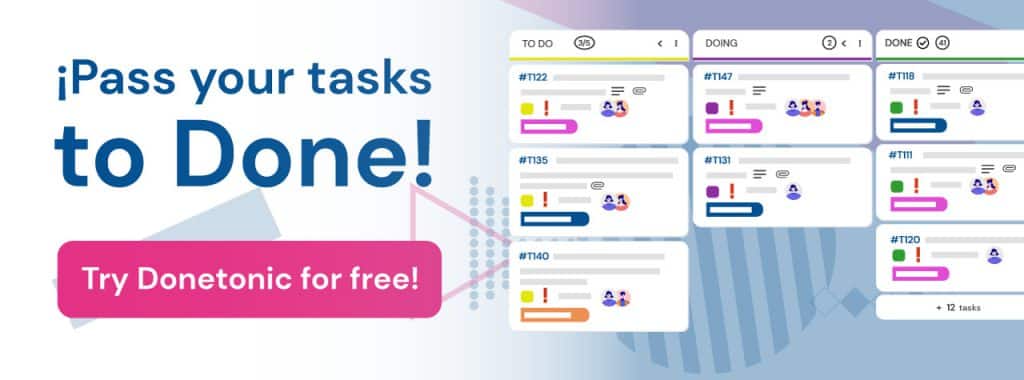Table of Contents
Do you know the differences between Scrum and Kanban? Do you know which methodology you need to implement in your company?
In the following article we are going to present the differences between Scrum and Kanban, but first, it is necessary to know both and understand that they are not mutually exclusive.
What is Kanban?
The Kanban method is part of what are known as agile methodologies and aims to manage in a general way how tasks are completed.
It has its origins in the Toyota company, in Japan, where it was applied to the manufacturing processes of the brand’s cars, and eventually became a method used by software developers.
It basically consists of representing, on a Kanban board, the work items which allows team members to see the task status of each one of them.
In other words, Kanban is a visual method used to control the developers’ tasks through their division by phases, until their completion.

What is Scrum?
Scrum is a work methodology or framework used by software development teams.
It works based on a series of sprints that define the tasks to be performed by the members of a team during a certain period of time, not recommended longer than 4 weeks.
In the article “What is Scrum” we develop this concept in a much broader way.
These two definitions lead us to a first conclusion: Kanban methodology and Scrum methodology are not the same, but now we will see how they are not mutually exclusive.
10 differences between Scrum and Kanban
Now that we know the two concepts, let’s look at the differences between Scrum and Kanban.
- Scrum is a framework designed to maximize the value delivered in the development of a complex product. Kanban, on the other hand, is designed to optimize the workflow.
- In Scrum there are roles, such as Scrum Master, Product Owner, while in Kanban there is no role at all.
- In Scrum you work on a sprint basis, a time interaction, while in Kanban there is a continuous workflow.
- In the Scrum methodology there are no changes in the project during the development of the sprint, on the contrary, in Kanban changes can occur at any time.
- In Scrum a Sprint backlog is needed to prioritize the tasks to be carried out in each sprint by the Product Owner, while in Kanban the tasks are indicated directly by the customer, so there is no prioritization.
- In the Scrum methodology, the sprint has to have a list of tasks to be carried out in that period of time, while in Kanban, the work rhythm is continuous and each new request from the customer will be a new card on the board.
- The boards are also different: in Scrum, a new board is created for each sprint, while in Kanban, these boards have no start and end date.
- In addition, Scrum boards track work as it progresses through the different stages, whereas in the Kanban board, the columns can be organized in different ways. The columns of the Scrum board indicate what task is being performed at any given moment, what has been performed and what is pending, while the columns of the Kanban board do not have to represent the status of the work, only the work itself.
- When working with the Scrum methodology, a daily meeting must be held, the Daily Sprint, to know the development status on a daily basis and to have an overview of the finished and pending tasks of the entire development team, while in Kanban there are no such meetings.
- The work teams can also be different: in Scrum, multidisciplinary teams are required, while in Kanban the teams can be formed by specialists.

Scrum or Kanban? which one to use?
As we have seen so far, there are differences between Scrum and Kanban, although they are not very significant, the objective of both is to achieve effective product development. They do not have to be exclusive methodologies, so if a team feels comfortable with the Scrum methodology, a Kanban board can be used to keep the team organized.
The important thing is to have a framework and a tool that can be used for development, and regardless of the methodology used, to have a flexible management system.



